Xiangqi (Chinese Chess) in Wan Bao Quan Shu Part 1
Author: Jim Png from www.xqinenglish.com.
Note: This article first appeared on Xiangqi.com.
Xiangqi has been an integral part of Chinese culture for centuries. There are still dozens of ancient manuals and even more pieces of writing on the topic. However, much of these books and passages have seldom been introduced to the West. The author will introduce a short section found in Wan Bao Quan Shu that introduces Xiangqi in this article.
The contents of the article include the following:
- About Wan Bao Quan Shu
- Different versions of Wan Bao Quan Shu
- Xiangqi in Wan Bao Quan Shu
- An introduction to Xiangqi
- Passage 2 from Wan Bao Quan Shu
- Passage 3 from Wan Bao Quan Shu
- Passage 4 from Wan Bao Quan Shu
- Passage 5 from Wan Bao Quan Shu
- Passage 6 from Wan Bao Quan Shu
- Passage 7 from Wan Bao Quan Shu
- Passage 8 from Wan Bao Quan Shu
- Passage 9 from Wan Bao Quan Shu
- Passage 10 from Wan Bao Quan Shu
- Passage 11 from Wan Bao Quan Shu
- Other 'abnormalities' of names of the Pieces and Notation used in Wan Bao Quan Shu
About Wan Bao Quan Shu
Wan Bao Quan Shu (《万宝全书》wàn bǎo quán shū) was an encyclopedia (类书 lèi shū) whereby an abridged version was published during the early Qing Dynasty. Its contents were extensive and included astrology, physiognomy, history, zoology, plants, geography, introduction to early countries neighboring China, et cetera, and of course games that the ancient Chinese played.
If the title were to be translated directly (author's translation), it would be Encyclopedia (全书) of Ten Thousand (万) Treasures (宝). The abridged version was simply given 《增补万宝全书》 whereby "增补" would mean added material.
The original author is not known but is believed to have been Chen Jiru (陈继儒chén jì rú, 1558-1639AD). He was a Chinese landscape painter, calligrapher, and writer who lived towards the end of the Ming Dynasty (1368-1644AD). Unfortunately, the author has not been able to find the original work by Chen Jiru. (1) (2)
The initial Encyclopedia was passed down for decades before Mao Huanwen (毛焕文 máo huàn wén) compiled an abridged version. Mao Huanwen is generally attributed as the author. Unfortunately, there is not much information that can be found about Mao Huanwen.
In the preface of the book, Mao wrote that this book was a copy and supplement to Bu Qiu Ren (《不求人》 bù qiú rén), which suggests that the original name of the book was Bu Qiu Ren.
The extant versions of Wan Bao Quan Shu would refer to Mao Huanwen's abridged version. There are several digitized versions of the Encyclopedia that can be found online, thanks to the efforts of various people in preserving the ancient books. Please refer to the citations at the end of this article for the URLs. The book has been categorized mainly under the tag of Chinese Encyclopedias and Dictionaries. (3) (4) (5) (6)
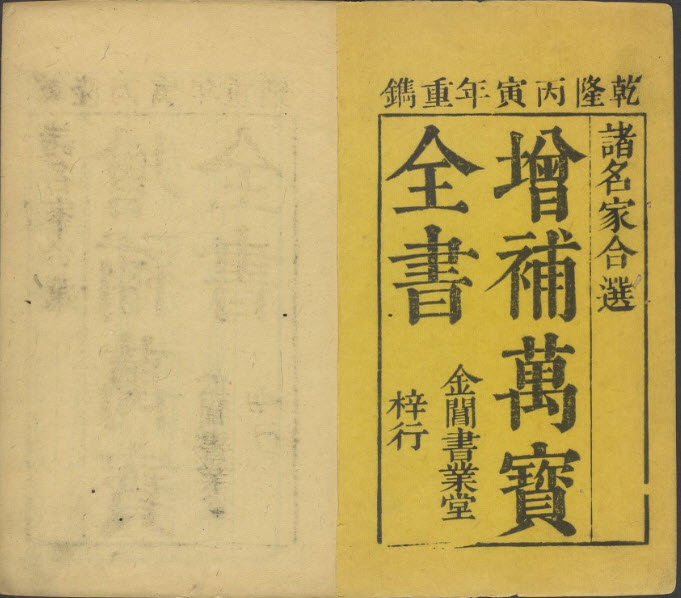
Diagram 1 Cover of Zeng Bu Wan Bao Quan Shu. This version is found on the Harvard Library Website. (6)
Different versions of Wan Bao Quan Shu
There were many versions of Wan Bao Quan Shu as it was reprinted many times.
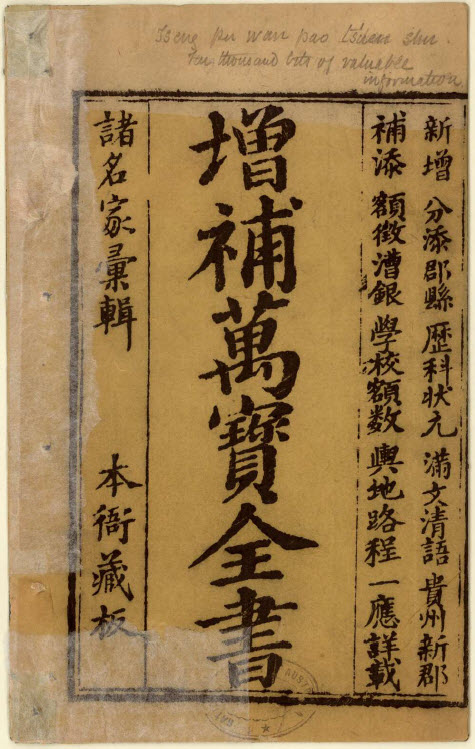
Diagram 2 Book Cover from the version found on the Australian website. (4)
The version found at the Trove (an Australian website) was published in 1739AD. It was listed by the information given on the website. It appears to be the earliest version that the author can locate. Surprisingly, it has been preserved in good form, and the contents are readable. The Xiangqi version can be found on Page 137, which would be Plate 138 on the website. (4)
The version found at the Library of Congress (United States of America) was published by She De Tang (世德堂 shì dé táng). According to the information furnished at the website, the original six schools were combined into three scrolls in this version. The section on Xiangqi was found in the 3rd Scroll or Juan 3 and began at the 10th image and ended on the 18th image given on the website. The images are a little bit unclear and need scrutiny when trying to make out the writings. The given date of publication was 1739AD. However, as the book was a combined version, the author of this article suspects it to be slightly later than the one found on the Australian website. (3)
The version found online at the Harvard Library website was published in 1746AD, and the publisher was Jinchang Shu Ye Tang (金閶書業堂, traditional Chinese, Jīn chāng shū yè táng). There were only six volumes. The printing style was Double leaves, oriental style, in case. Note: The book cover gives 乾隆丙寅年 which should be 1746AD, not 1747AD as provided in the details on the website. (6)
The version given in the Stanford Library was published in 1823AD. It was posted by Jin Chang Jing Yi Tang (金閶經義堂 traditional Chinese, jīng yì táng). Clicking on the link given will redirect you to the Google edition. The section on Xiangqi was also located in the twelfth scroll, which is slightly after the middle portion using the scroll bar. The article is identical to the Australian edition but appears to be clearer and easier to read. (1)
A version available in the catalog available at Princeton University dates their version to be from 1823AD. It was published by Jin Chang Jing Yi Tang (金閶經義堂 Jīn chāng jīng yì tang). The author does not know if this publisher was related to the publisher given in the version from the Harvard Library Website. The author has trouble accessing this version. (5)
It appears that there are several versions of the book. A blogger mentioned several other versions where the author has not been able to verify. (7)
The author has decided to list his findings for interested readers to do their research.
- 1842 version by Ben Li Tang republished version (本立堂再版本běn lì táng zàibǎn běn);
- 1854 version by Wu Ben Tang Yuan Ji Ben (务本堂源记本 wù běn táng yuán jì běn);
- 1871 version by Ji Qing Tang Ben (积庆堂本 jī qìng táng běn);
- 1874 version by Ai Ri Tang Zi Ben(爱日堂梓本 ài rì táng zǐ běn);
- 1883 version by Liang Yi Tang Ben (两仪堂本 liǎng yí táng běn) and San Rang Tang Zi Ben (三让堂梓本 sān ràng táng zǐ běn), et cetera.
Xiangqi in Wan Bao Quan Shu
The twelfth scroll (卷 juàn) contained the section on Bo Yi (博弈门 bó yì mén), which would be equivalent to a section on the games that the ancient Chinese played. In that scroll, there were contents on Xiangqi, Weiqi, Prasaka, et cetera.
For the portion on Xiangqi, there was a short introduction to the game, how to move the pieces, a diagram of the array, and many poems that include advice on how to play the game. And then there were eleven endgame compositions that were mainly selected from earlier Xiangqi manuals like One Hundred Variation of Xiangqi (《百变象棋谱》bǎi biàn xiàng qí pǔ). There were limited variations that were listed in the book.
Several interesting things about how Xiangqi was presented in the book will be introduced in the following passage.
An introduction to Xiangqi
The section on Xiangqi was found at the upper half of the book at the beginning of the 12th Scroll (marked by 1) in Diagram 3. The author has translated the passages one by one.
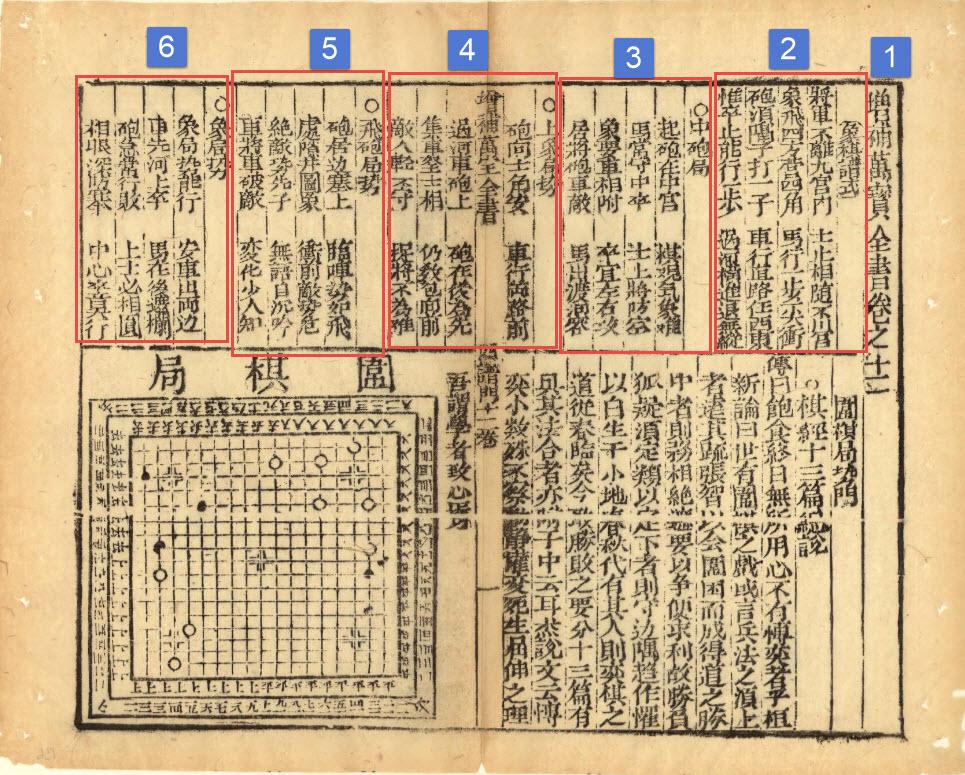
Diagram 3 Start of the section on Xiangqi. Image 137 from the Australian Website. (4)
At the start of the section on Xiangqi, passage 1 would identify the section on Xiangqi from the twelfth scroll.
Passage 2 from Wan Bao Quan Shu
Passage 2 (marked as '2') contained a poem that described how the pieces moved. It would be the top right-hand corner of Diagram 3. The poem is given below. The original writing was in traditional Chinese, and the author of this article has changed them to Simplified Chinese and added a translation of his own.
Note: Traditionally, manuscripts are read from the top RIGHT corner to the Left Bottom Corner, i.e., from RIGHT TO LEFT.
Passage 2:
《象棋谱式》
将军不离九宫内,士止相随不出官。
象飞四方营四角,马行一步一尖冲。
炮须隔子打一子,车行直路任西东。
唯卒只能行一步,过河横进退无踪。
Translation:
《象棋谱式》(xiàng qí pǔ shì): Xiangqi Manual on how to move the pieces.
将军不离九宫内 (jiāng jūn bù lí jiǔ gōng nèi): The King does not leave the Palace.
士止相随不出官 (shì zhǐ xiāng suí bù chū guān): The Advisor stays close to the King and does not leave the Palace.
象飞四方营四角 (xiàng fēi sì fāng yíng sì jiǎo): The Elephant' flies' to the four corners of his camp.
马行一步一尖冲 (mǎ xíng yī bù yī jiān chōng): A move by the Horse consists of moving it to the adjacent intersection followed by a diagonal component (一尖冲)
炮须隔子打一子 (pào xū gé zǐ dá yī zǐ): The Cannon needs another piece for it to leap over to capture material.
车行直路任西东 (chē xíng zhí lù rèn xī dōng): The Chariot moves in a straight line for as many intersections as it desires.
唯卒只能行一步 (wéi zú zhǐ néng xíng yī bù): Only the Pawn has moved in one intersection.
过河横进退无踪 (guò hé héng jìn tuì wú zōng): After crossing the river, it may traverse to the adjacent intersection. And it can attack forward.
Passage 3 from Wan Bao Quan Shu
See Diagram 3.
After the introduction on how the pieces moved, there were several passages of advice on how to play the game. These passages were either copied or modified from the advice given in The Secret in the Tangerine. The author has collected these passages in his Lexicon of Xiangqi. The text was written in Traditional Chinese, but the author has changed it into Simplified Chinese. (8)
Passage 3 contained the advice or tips for playing the Central Cannon Opening. There were slight discrepancies that were different from the Secret in the Tangerine. The poem was:
《中砲局》
起炮在中宫,棋观气象雄。
马常守中卒,士上将防空。
象要车相附,卒宜左右攻。
居将炮车敌,马出渡河容。
The following is the author's translation
《中砲局》 (zhōng pào jú): The Central Cannon
起砲在中宫 (qǐ pào zài zhōng gōng): Starting the game by moving the Cannon to the Center.
棋观气象雄 (qí guān qì xiàng xióng): is impressive from the way it looks. (Note: This piece of advice is slightly different from the verses given in The Secret in the Tangerine)
马常守中卒 (mǎ cháng shǒu zhōng zú): The Horse(s) have to protect the central pawn,
士上将防空 (shì shàngjiàng fang kōng): the Advisors do their defending against enemy attacks along the central file.
象要车相附 (xiàng yào jū xiāng fù): The Elephants (weaknesses on both flanks) need protection from the chariots
卒宜左右攻 (zú yí zuǒ yòu gōng): while the pawns can be used to attack from both left and right.
居将炮车敌 (jū jiàng pào jū dí): If the Cannon is ready to attack the enemy territory,
马出渡河容 (mǎ chū dù hé róng): the horses must follow and cross the river not far behind.
Passage 4 from Wan Bao Quan Shu
Passage 4 would contain advice on the Elephant Opening.
《上象局势》
炮向士角安,车行两路前。
过河车砲上,砲在后为先。
集车拿士相,仍教包向前。
敌人轻不守,捉将不为难。
《上象局势》 (shàng xiàng jú shì): Starting with the Elephant
砲向士角安 (pào xiàng shì jiǎo ān): The Cannon is moved to the Palace Corner
车行两路前 (jū xíng liǎng lù qián): The Chariots moves in the two files.
过河车砲上 (guò hé jū pào shàng): After the Chariot crosses the river, the Cannon follows suit.
砲在后为先 (pào zài hòu wéi xiān): The Cannon will do more damage if it is placed at the rear.
集车拿士相 (jí jū ná shì xiàng): The Chariots are concentrated to capture the enemy Advisor and Elephants. This piece of advice was different from The Secret in the Tangerine.
仍教包向前 (réng jiào bāo xiàng qián): The Cannon will still advance.
敌人轻不守 (dí rén qīng bù shǒu): When the enemy's attack is light, no defense is required.
捉将不为难 (zhuō jiàng bù wéi nán): It will not be difficult to capture the enemy general (King).
Passage 5 from Wan Bao Quan Shu
Passage 5 contained advice for the Flying Cannons.
《飞炮局势》
砲车边塞上,临阵势如飞。
虚隙井图象,冲前敌势危。
绝敌寻先子,无语自沉吟。
车将车破敌,变化少人知。
《飞砲局势》(fēi pào jú shì): The Flying Cannon Style
砲车边塞上 (pào jū biān sài shàng): The Cannon and Chariot attack from the edge files.
临阵势如飞 (lín zhèn shì rú fēi): where they will soar in the match/
虚隙井图象 (xū xì jǐng tú xiàng): Traps are set to target the enemy Elephant
冲前敌势危 (chōng qián dí shì wēi): When they start their assault, the enemy will be in trouble.
绝敌寻先子 (jué dí xún xiān zǐ): to deliver the final blow, look for the pieces in front.
无语自沉吟 (wúyǔ zì chényín): When one is speechless, it is a good time to ponder,
车将车破敌 (jū jiàng jū pò dí): the Chariot will defeat the King
变化少人知 (biàn huà shǎo rén zhī): Not many know the variations.
Passage 6 from Wan Bao Quan Shu
Passage Six also contained general advice for maneuvering material. The name is not to be mistaken from the advice for the Elephant Opening as suggested in Passage 4. Most of the advice is still applicable. For example, it is highly recommended that the Cannon is not be moved simply in the opening phase, especially when advancing it into enemy territory. This advice is given in the passage below.
《象局势》
象局势能行,安车出两边。
车先河上卒,马在后遮拦。
砲急常行动,上士必相圆。
相眼深防塞,中心卒莫行。
势成方动炮,攻敌两河边。
劝君依此诀,捉将有何难。
《象局势》 (xiàng júshì) General Advice about the position in Xiangqi
象局势能行 (xiàng jú shì néng xíng): In a game of Xiangqi, the following can be done.
安车出两边 (ān jū chū liǎng bian): The Chariot should be developed from the sides.
车先河上卒 (jū xiān hé shàng zú):
马在后遮拦 (mǎ zài hòu zhē lán): The Horse should be stationed at the rear to block the enemy's attack.
砲急常行动 (pào jí cháng xíng dòng):
上士必相圆 (shàng shì bì xiāng yuán): moving the Advisor will link them and provide defense
相眼深防塞 (xiàng yǎn shēn fáng sāi): the Elephant's eye should be prevented from being blocked.
中心卒莫行 (zhōng xīn zú mò xíng): the Central Pawn should not be advanced,
势成方动炮 (shì chéng fāng dòng pào): when the time is ripe should the Cannon be mobilized,
攻敌两河边 (gōng dí liǎng hé biān): where it can attack the enemy from both sides of the river.
劝君依此诀 (quàn jūn yī cǐ jué): the reader is advised to memorize and learn the advice given here,
捉将有何难 (zhuō jiāng yǒu hé nán): what difficulty is there to capture the enemy's general?

Diagram 4 Second page on Xiangqi. Image 138 from the Australian Website. (4)
Passage 7 from Wan Bao Quan Shu
Passage 7 explained how to attack and capture an enemy Chariot. The advice given here is quite practical.
《破车势》
一车在中营,鸳鸯马上攻。
一车河上立,中卒向前冲。
引车塞象眼,炮在后相从。
《破车势》 (pò jū shì): Defeating the Chariot
一车在中营 (yī jū zài zhōng yíng): When a single Chariot is at the camp,
鸳鸯马上攻 (yuan yāng mǎ shàng gōng): used linked Horses to attack. (Note: Horses linked are also known as Mandarin Duck Horses as the ancient Chinese believe that Mandarin Ducks are loyal to their partners for life and go together everywhere.)
一车河上立 (yī jū hé shàng lì): When a Chariot is stationed on the riverbank,
中卒向前冲 (zhōng zú xiàng qián chōng): the Central Pawn is charged forward.
引车塞象眼 (yǐn chē sāi xiàng yǎn): try to lure the enemy Chariot to the Elephant's eye,
炮在后相从 (pào zài hòu xiāng cóng): and use the Cannon to follow it (the enemy Chariot) around.
Passage 8 from Wan Bao Quan Shu
Passage 8 would discuss some very rudimentary principles that are still applicable.
《宜用心机》
象棋易学最难精,妙着神机自巧生。
得势舍车方有益,失先弃子必无成。
他强己弱须兼守,彼弱吾强可横行。
更熟此书胸臆内,管教到处有芳名。
《宜用心机》 (yí yòng xīn jī): It is important to strategize
象棋易学最难精 (xiàng qí yì xué zuì nán jīng): The game of Xiangqi is easy to learn but hard to master.
妙着神机自巧生 (miào zháo shén jī zì qiǎo shēng): Brilliant shots are often born out out
得势舍车方有益 (dé shì shě jū fāng yǒu yì): It is beneficial if gains in position are earned at the expense of sacrificing a Chariot
失先弃子必无成 (shī xiān qì zǐ bì wú chéng): Sacrificing material and losing the initiative in the process is bound to lead to failure.
他强己弱须兼守 (tā qiáng jǐ ruò xū jiān shǒu): If the enemy is strong and I am weak, emphasis is placed on defense.
彼弱吾强可横行 (bǐ ruò wú qiáng kě héng xíng): If the enemy is weak and I am strong then I can bully my way around.
更熟此书胸臆内 (gēng shú cǐ shū xiōng yì nèi): If you were to read and memorize the contents of this book well,
管教到处有芳名 (guǎn jiào dào chù yǒu fāng míng): it would be easy to make a name for yourself as you travel around.
Passage 9 from Wan Bao Quan Shu
Passage 9 contained more practical advice and stressed the importance of initiative and positional games.
《胜宜得先》
得子得先名得胜,得子失先却是输。
车前马后须相应,进退应须要付车。
《胜宜得先》 (shèng yí dé xiān): To win, you must have the initiative
得子得先名得胜 (dé zǐ dé xiān míng dé shèng): Gaining material and initiative is called winning.
得子失先却是输 (dé zǐ shī xiān què shì shū): Gaining material but losing the initiative is losing.
车前马后须相应 (jū qián mǎ hòu xū xiāng yìng): The Chariot is placed in front while the Horse is positioned at the rear, they both need to help each other out.
进退应须要付车 (jìn tuìyìng xū yào fù jū): When advancing or retreating, the Chariot remains one of the more essential pieces.
Passage 10 from Wan Bao Quan Shu
Passage 10 simply explained what was meant by advancing, retreating, and traversing a piece.
《行子指明》
向彼行曰进
向己行曰退
横走则曰平。
《行子指明》 (xíng zǐ zhǐ míng): How to move the pieces
向彼行曰进 (xiàng bǐ xíng yuē jìn): To move the piece in the direction of the opponent is known as advancing the piece.
向己行曰退 (xiàng jǐ xíng yuē tuì): To move the piece in your direction is known as advancing the piece.
横走则曰平 (héng zǒu zé yuē píng): To move a piece horizontally is known as "平 'aka traversing.
Passage 11 from Wan Bao Quan Shu
Passage 11 was a guide on reading the ancient manual notation and mentioned the variations that might be seen. It is interesting to note that the numbers' notation is the opposite of other ancient manuals or the current World Xiangqi Federation recommendations. In Wan Bao Quan Shu, the NUMBERING OF THE FILES START FROM THE LEFT FOR BOTH COLORS.
《九变进退平守字解》
凡云一进十
以己局一路上子行至彼一路曰一进十退曰十退一
如云一平九从己局左手一路横行至右九路是也
如局势内有变字者九局必有几变论厥(?)之妙
如云守是局只可守和
觑彼后有动静如何算细计之
《九变进退平守字解》
凡云一进十以己局一路上子行至彼一路曰一进十退曰十退一 (fán yún yī jìn shí yǐ jǐ jú yī lù shàng zǐ xíng zhì bǐ yī lù yuē yī jìn shí tuì yuē shí tuì yī)
如云一平九从己局左手一路横行至右九路是也 (rú yún yī píng jiǔ cóng jǐ jú zuǒ shǒu yī lù héng xíng zhì yòu jiǔ lù shì yě)
如局势内有变字者九局必有几变论厥(? Blurred writing)之妙 (rú jú shì nèi yǒu biàn zì zhě jiǔ jú bì yǒu jǐ biàn lùn jué zhī miào)
如云守是局只可守和 (rú yún shǒu shì jú zhǐ kě shǒu hé)
觑彼后有动静如何算细计之(qù bǐ hòu yǒu dòng jìng rú hé suàn xì jì zhī)
Other 'abnormalities' of names of the Pieces and Notation used in Wan Bao Quan Shu
The notation used in Wan Bao Quan Shu did not conform to other ancient manuals of its time. The files for both colors were numbered from left to right for both colors.
It is interesting to note that Red Cannon was represented by 砲, which is translated as Catapult and uses the radical for stone '石.' The Black Cannon was represented by '包' in the following puzzles which did not contain any radical at all. In other early writings, the Cannon was given as 炮, with the radical for fire '火.' Perhaps it was due to difficulties in printing that the Cannons were presented as such.
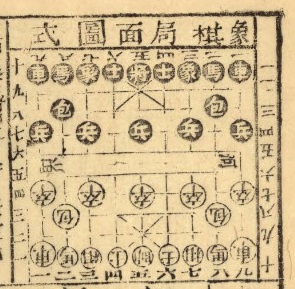
Diagram 5 Array given in the Encyclopedia (4)
There are several interesting bits of information. In the array, Red was placed at the bottom of the diagram. '卒' was used to refer to the Red Pawn, and '兵' was used to refer to the Black Pawn. It would be the complete opposite of modern-day recommendations.
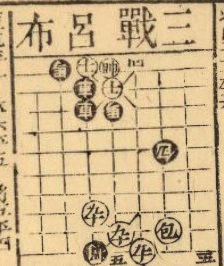
Diagram 6 Different notation and positioning used in puzzle 3. (4)
As can be seen from endgame composition 3, there were no markings for the river. Perhaps this was an error in printing. Black was also placed at the bottom of the diagram. The rest of the endgame compositions would show similar findings.
In particular, an unknown Chinese character is used for the Red Pawn, as shown in endgame composition 3.
To be continued
Works Cited
1. Chen, Jiru and Mao, Huanwen. Zeng bu Wan bao quan shu : [20 juan] 增補萬寶全書 : [20卷]. Standford Libraries. [Online] [Cited: Oct 15, 2021.] https://searchworks.stanford.edu/view/8223962.
2. contributors, Wikipedia. Chen Jiru. Wikipedia, The Free Encyclopedia. [Online] 1035889093, Jul 28, 2021. [Cited: Oct 16, 2021.] https://en.wikipedia.org/w/index.php?title=Chen_Jiru&oldid=1035889093.
3. Mao, Huanwen 18th Century. Zeng Bu Wan Bao Quan Shu : Liu Juan. Library of Congress. [Online] Qing Qianlong 4 nian 1739. [Cited: Oct 15, 2021.] https://www.loc.gov/item/2012402386/.
4. shi, Mao Huanwen zeng bu. Zeng bu Wan bao quan shu / zhu ming jia hui ji ;. TROVE. [Online] [Cited: Oct 15, 2021.] https://nla.gov.au/nla.obj-46009837/view?partId=nla.obj-46010540#page/n7/mode/1up.
5. 萬寶全書 : 毛煥文 Wan bao quan shu : Mao Huanwen. Princeton University Library. [Online] [Cited: Oct 15, 2021.] https://catalog.princeton.edu/catalog/SCSB-7603207.
6. Mao, Huanwen. Chinese Rare Books Zeng bu wan bao quan shu. Curiosity Collections. [Online] [Cited: Oct 15, 2021.] https://curiosity.lib.harvard.edu/chinese-rare-books/catalog/49-990080858650203941.
7. 博圣1683. 《万宝全书》. 新浪博客. [联机] 2013年Jul月8日. [引用日期: 2021年Oct月17日.] http://blog.sina.com.cn/s/blog_a059095f0101fpk4.html.
8. Png, Jim Hau Cheng. Lexicon of Xiangqi (Chinese Chess) Terms in English. Taipei : Jim Png Hau Cheng, 2017. 978-957-43-4707-0.
9. Murray, HJR. A History of Chess ( 1913 Orginal Edition). New York : Skyhorse Publishing, 2012. reprint. 978-1-63220-293-2.
